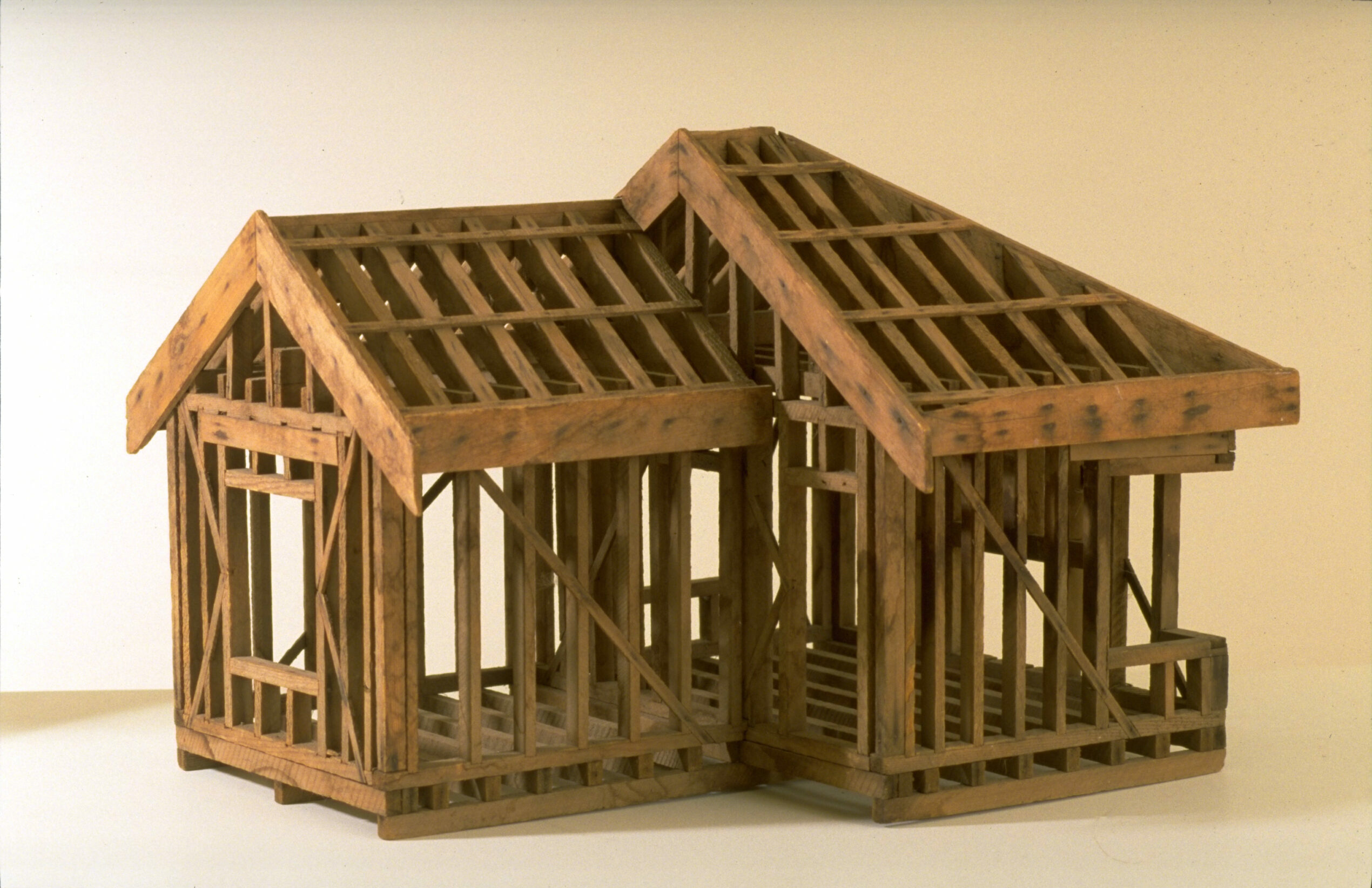WOOD: Art Design Architecture, touring exhibition, Jam Factory/Botanical Gardens of Adelaide, 2013-2014
The timber frame that forms the skeleton of a domestic house provided the initial inspiration for the works made in wood. There is, for me, a workman-like beauty inherent in the timber frame that supports a house. Built of workhorse timber, it is the armature that supports the dreams of architects on the rise and owners buying into the great Australian dream. The repetitive simplicity of the structure mediating a clear blue sky, casting a long shadow across the ground or framing the view of the landscape always captivates my attention. I love its innocence and permeability, and its fragile role as repository for the optimism of future dwellers.
My obsessive observation of the early stages of new house construction led to a collection of apprentice models dating back a half a century and more. Most of the models are out of scale and clumsy attempts at learning, but occasionally perfection appears. Would-be builders of houses were taught building skills in trade schools or technical classes. This model is thought to be 30 to 50 years old, most likely originating from technical classes run at Sacred Heart College, Kyneton, in central Victoria, not far from where I lived between 1998 and 2010.
The wooden works often have either a distinct relationship with the human body or are under-scaled, making them look like toys. The ‘drink me’ effect of Alice’s elixir, causing the house frame to rise from the ground as if on stilts, is reminiscent of the backyard tank stand of postwar suburbs, or the towers of Life Savers that elevated the watchers at the edge of the sea and fascinated a child. In some states of Australia, the timber frame has been all but replaced by metal, and in all states, there is a drift to metal frames that, for me, have none of the poetry of the timber frame, despite their heroism in the face of termite infestation. And just as wood is giving way to metal, the skills of the tradesmen are gradually being eroded.
As the ideas for these works grew, so did the pressure to locate a tradesman with the appropriate skills to assist with fabrication. Eventually I found Bill Millar (1917 – 2011). already in his 80s but remarkably bright eyed and productive. Bill was a living archive of wood construction and building techniques learned on the job as a builder, and later as a shop fitter. He supported me as my studio assistant for five years until his health failed him, and I was reminded that the memory pool is being eroded and diminished. We are losing valuable craft traditions in the search for cost-effective methods and new building materials. Younger men who use machines where hands were once used now complete the fabrication of the wooden works. Already a drift has occurred, but respect for the old traditions remains and my new assistants have a vocabulary of traditional woodworking techniques unusual for contemporary wood craftsmen.
Dr Greer Honeywill 2013

